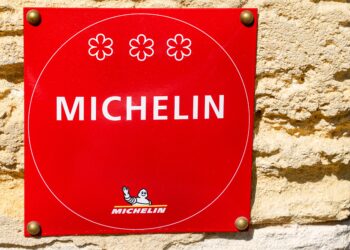Every summer’s day cheesemaker Stéphane Henchoz and his 55 cows have a routine. It begins at 5:30am when Henchoz wakes up in his seasonal chalet high in the Swiss Alps and turns on the 20-watt bulb in his kitchen. (Utility wires are nonexistent here at 5,800 feet, so a small generator provides the power.) After a breakfast of bread and heavy cream that he eats straight from the pot, Henchoz heads off to round up the cows.
The animals graze and sleep farther up the mountain, in meadows blanketed with shaggy wild grasses and iridescent wildflowers, some of which grow knee-high. Once Henchoz and his border collie have guided the herd back into the stables, he and his girlfriend, Natasha, begin milking. They fill a huge copper vat that hangs over an open flame and spend the next hour heating, stirring, and straining, until the liquid is transformed into three 50-pound wheels of L’Etivaz cheese.
If you’ve ever tasted L’Etivaz, you might have guessed that it’s crafted over a wood fire using a technique that has hardly changed for centuries. A little bit smoky and a little bit flowery, this rich, raw-milk cheese is an old-school cousin of Gruyère, the better-known Alpine brand made in much larger quantities a few miles up the road.
In 1932, a group of families from the hamlet of L’Etivaz (from which the cheese takes its name) founded their own producers’ cooperative; later they broke off from the Gruyère juggernaut and established their own strict standards, and in 1999 L’Etivaz became the first food product in Switzerland to be granted A.O.C. status (it’s now called A.O.P., for appellation d’origine protégée). For Henchoz and his fellow L’Etivaz producers, this means adhering to exacting protocols.
The cheese can be made only at altitudes of between 1,000 and 2,000 meters (3,280 to 6,560 feet) in the mountains near L’Etivaz in southwest Switzerland. Production must take place between May 10 and October 10 while the cows graze in the pristine meadows surrounding the cheesemaker’s chalet d’alpage, a sort of mountain hut—farmhouse. The milk itself must be stored for no more than 18 hours and must never leave the property. In Henchoz’s case, it travels a distance of roughly 20 feet, from the barn to the main house. Every few days, he delivers a dozen or so cheese wheels to a vast communal cellar in the village, where they will soak for 24 hours in a brine bath before being aged in three different rooms, at three different temperatures and humidity levels, for a minimum of 135 days.
Anyone who’s ever seen a perfectly symmetrical Swiss haystack—to say nothing of a Breitling chronograph—knows that the Swiss have a thing for order and precision. Even the woodpiles in this part of the Alps are marvels of obsessive exactitude, the logs seemingly cut and stacked to the millimeter. Likewise, the L’Etivaz cheesemakers’ cooperative follows a long list of guidelines down to the type of fabric required for cheesecloths (100 percent linen only, please). “It’s how we maintain quality,” says Pascal Guenat, who runs the cooperative and is L’Etivaz’s one-man cheese police. He is often seen prowling the storage cellars in a white lab coat.
Yet as I witnessed this summer while spending time with a half-dozen cheesemaking families, L’Etivaz’s magic ingredient is a certain handmade, homey realness. Even in Switzerland, there’s a limit to how much one can regulate something as natural and complex as an artisanal cheese. Currently, 72 families produce L’Etivaz, following the same rules, but the final product inevitably varies from household to household, due to minute differences in technique or terroir. Guenat, who every November grades each cheesemaker’s output on a scale of zero to 20, makes no attempt to suppress the inconsistencies. He jokes that a well-trained palate might be able to pinpoint the exact pasture where each wheel of L’Etivaz originates. (Extra smoky with a hint of dandelion? Must be Pierre’s. Creamy with top notes of moss? Jean-Luc’s, of course.)
The local school district allows cheesemakers to pull their children out of classes a few weeks early every May so that the whole clan—parents, kids, animals— can head up the mountain together. Some families have two or three chalets, at varying altitudes, so they can move their cows higher as the summer snows melt and delectable wildflowers sprout. And in many households, the kids start pitching in at the cauldron around the same time they tackle their first Asterix comic book.
“In the end, a lot of cheesemaking is about instinct and feeling. If you get too worried about the rules, then people will taste the stress in the cheese, and that’s not good.
- Frédéric Chabloz, who has been producing L’Etivaz for three decades in a small, fragrant room off his kitchen.












